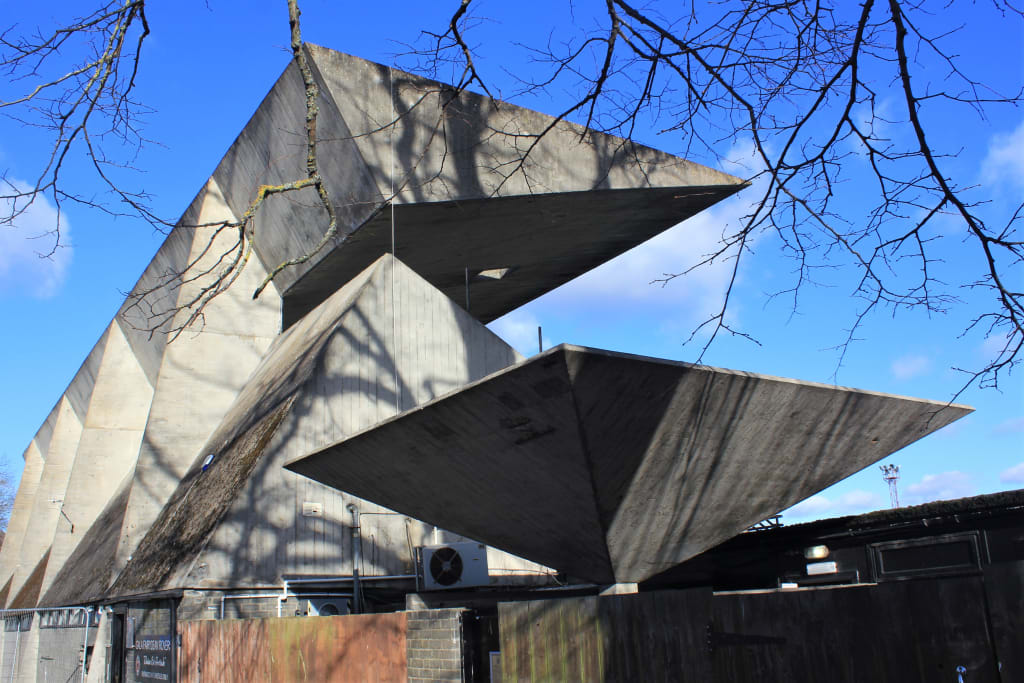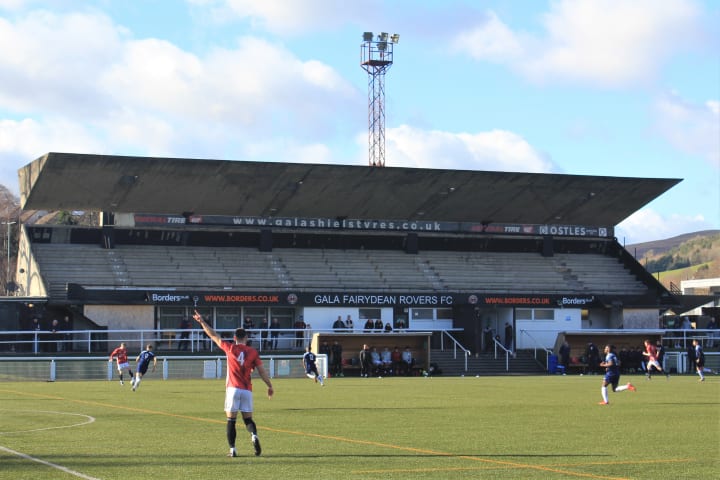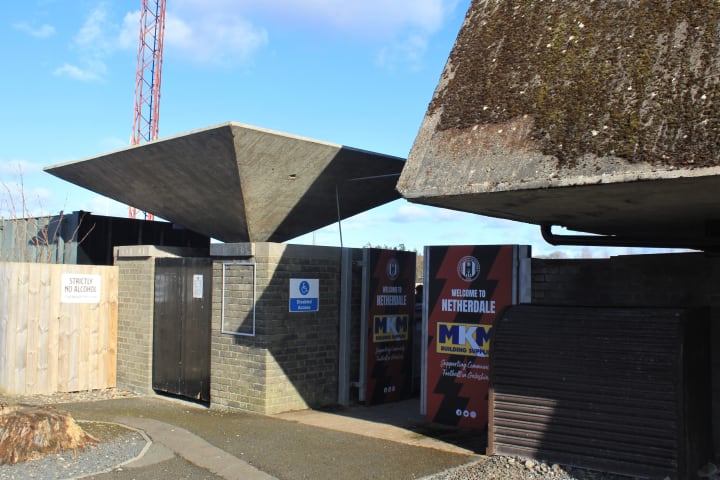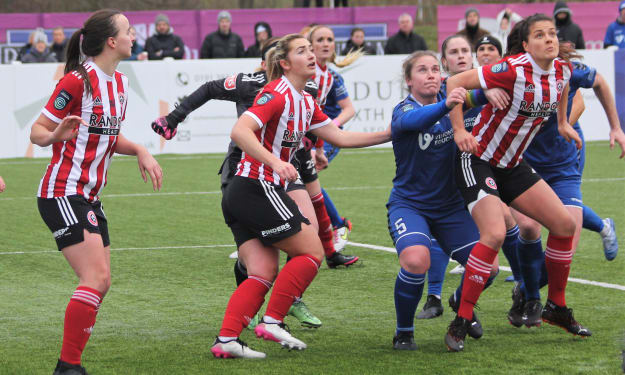Brutal
A unique football ground in the Scottish Borders

Gala Fairydean is one of the most picturesque names in Scotland’s poetic football litany. Yet the Lowland League club’s home at Netherdale, Galashiels, is one of the most divisive structures in the game. Far from evoking the exquisite woodland glade described by Sir Walter Scott (a local lad), this work by Peter Womersley (another local resident, albeit an incomer in a very different age) confronts the visitor with stark concrete geometry. Love it or hate, the main stand at the 3G Arena is a rare and distinctive sight.
OK, cards on the table. I love it. I get the complaints that concrete is an ugly material, I get how the stark juxtaposition of angular architecture and the rolling hills on the horizon might jar. And it’s all too painfully clear that the building has seen better days, while its Grade A listed status makes it hard to renovate.
But, in an age when uniformity become overwhelming – from the generic big club bowl, distinguished only by colour scheme or capacity, to the grassroots prefab stand and cage fencing – this is one of those unique bits of football heritage that deserves to be cherished.

It dates from the 1960s, a time of radical new developments in architecture. This was only a few short years since the first cantilever stands appeared in Britain, bringing a welcome end to the need for fans to crane their necks around pillars as the action moved up and down the field. Early examples of those stands, such as the now lost Billingham Synthonia ground on Teesside, apparently influenced Wormersley here.
However, Wormersley’s genius – and while his reputation suffered from pursuing a career in the remote Scottish borders, rather than chasing headline-grabbing commissions in Europe’s rapidly-rebuilding post-war capitals, the term is entirely apt – lay in his ability to push the structural capacities of concrete to its limits. Toss aside lazy comparisons with Soviet apartment blocks; there’s an austere geometric beauty about the two right-angled triangles, juxtaposed to form the main stand, and the detail of the inverted pyramids that cover the turnstile blocks. The initial concept was for the upper canopy to ‘float’ above its earthbound twin, supported by four slender columns at the base, with open space between. Later, much of that effect was lost, sacrificed to the need to sell advertising hoardings. Recently, though, some of those hoardings have been removed and, at one end of the stand, there’s a hint of the original vision.

Sadly, that’s almost the full extent of the good news here. On my first visit, in 2018, the stand was looking past its best. Four light fittings in the roof were gone, leaving four gaping holes that opened onto a drizzly February afternoon. At least, though, at that time it was still possible to sit in the stand. On my return in 2022, the structure was roped off; a structural report had identified enough problems to render it potentially unsafe, and conservative estimates put the repair bill will into six figures. One of those prefab stands has since sprouted on the opposite side of the plastic pitch, complying with Lowland League requirements in a purely functional fashion. Meanwhile, the building’s status as an architectural monument, ratified by Historic Scotland in 2006, means there’s a complex – and inevitably costly – legal process involved in changing or removing it. In a worst-case scenario, the club’s flagship could yet sink it.

Architecture experts praised its “unusual interest and subtlety” back in the 1960s, and more recent critics talk of a “miraculous work of concrete origami”. Some see echoes of Galashiels in London’s Olympic Park, while others lament the faux oak beams and roof panels of a bar awkwardly inserted later.
Opinions like this are easy enough to form on a one-off visit. For the people who deal with the stand every day, Netherdale is a polarizing venue. In David Bauckham’s majestic photo essay of 2017, even club officials are divided: one man’s monstrosity is another man’s source of awe. Yet, the architecture of sport is not so rich in genuine innovation that our society can easily discard what it has.
In a perfect world, the iconic status of the stand would attract the funding to restore it. The club would be able to trade ever more heavily on its unique architectural treasure and even the naysayers could take comfort from the fact that when sitting in the stand, you can’t actually see it. But this is a far from perfect world, and the long-term future of Womersley’s grand design remains uncertain.

About the Creator
Andy Potts
Community focused sports fan from Northeast England. Tends to root for the little guy. Look out for Talking Northeast, my new project coming soon.
Enjoyed the story? Support the Creator.
Subscribe for free to receive all their stories in your feed. You could also pledge your support or give them a one-off tip, letting them know you appreciate their work.






Comments
There are no comments for this story
Be the first to respond and start the conversation.